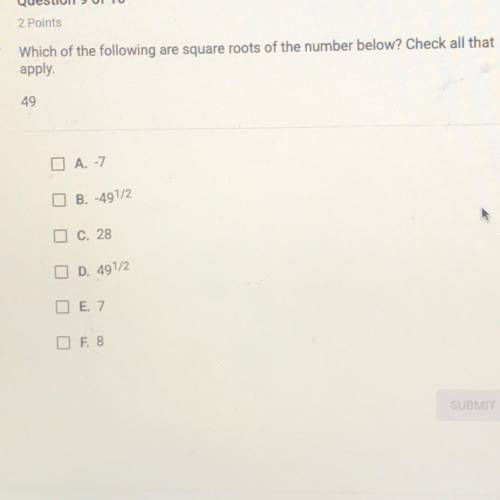Mathematics, 21.06.2019 12:50,
xojadePlz, ! the box plot below shows the total amount of time, in minutes, the students of a class surf the internet every day: a box plot is shown. part a: list two pieces of information that are provided by the graph and one piece of information that is not provided by the graph. (4 points) part b: calculate the interquartile range of the data, and explain in a sentence or two what it represents. (4 points) part c: explain what affect, if any, there will be if an outlier is present. (2 points)
Answers: 3
















